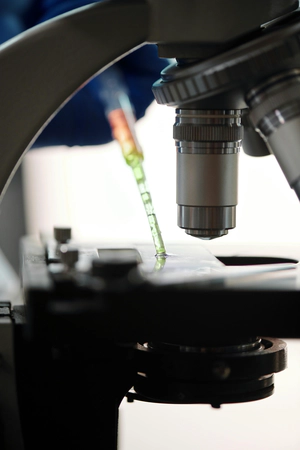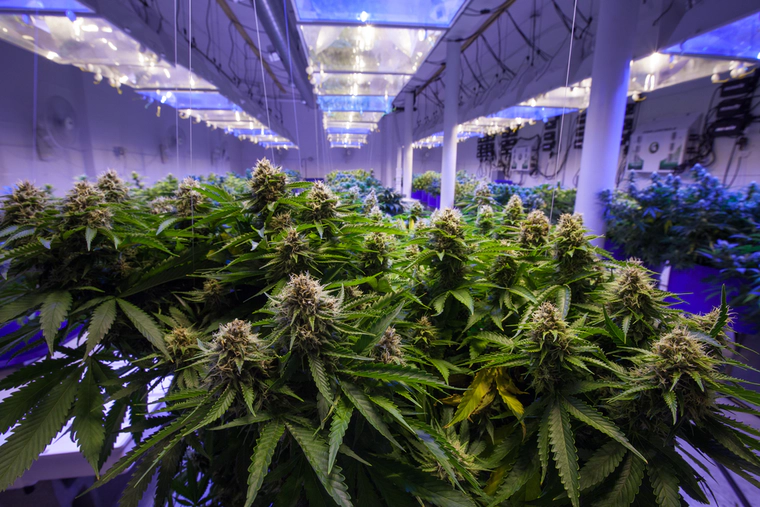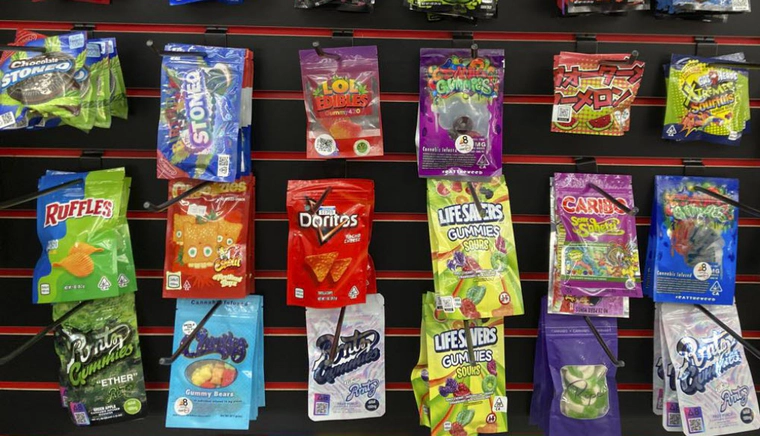What Is “Delta 8,” What Does It Do, and Who Is Using It?
A growing cannabis industry based on a legal loophole threatens users with a lack of regulation or quality controls.

Photo by Edward Jenner/Pexels.com
If you see a store in your town with a “Delta 8” sign in the window, they are selling a psychoactive substance derived not from marijuana but from hemp. What’s the difference between these two plants? Very little. The difference is defined by the quantity of delta-9 tetrahydrocannabinol (usually referred to as THC) contained by the plant. That’s the well-known intoxicant that gets pot smokers or consumers of marijuana edibles high.
The amount of this Delta-9 THC makes all the difference:
-
Hemp must (by federal decree) contain less than 0.3% Delta-9 THC.
-
The same type of plant that has more than 0.3% Delta-9 THC is referred to as marijuana.
So why might you be seeing Delta-8 for sale in your state, even if marijuana cannot legally be sold? Because of a loophole in federal law—specifically, the 2018 Farm Bill. Since that bill was passed, an entirely new industry has arisen to manufacture and sell an intoxicant derived from hemp—not the higher-THC plant, but the low-THC hemp. Its full name is delta-8-tetrahydrocannabinol. It’s often referred to just as Delta-8 or Delta-8 THC.
As you will soon learn, there are actually hundreds of unique chemicals in this marijuana/hemp plant, not just these two. Many have psychoactive effects, meaning they affect the mind, perceptions, and thinking.
About the Farm Bill that Launched This New Industry
The Latin name for the hemp/marijuana plant is Cannabis sativa. As laws began to be passed to outlaw marijuana, all types of Cannabis sativa were banned, whether they were used for their psychoactive effects or to make hemp products. Until the Farm Bill was passed in 2018, hemp crops stayed banned, even though hemp had long been used for clothing and ropes1.
The Farm Bill legalized the growing of hemp crops once more, with the restriction that only hemp plants with 0.3% or less Delta-9 THC could be grown. It didn’t take long for a new industry to form itself to take advantage of this law. Growers and processors across the country began extracting and concentrating the small quantities of intoxicants that could be derived from hemp when it became a legal crop.

One of the most popular new extracts was Delta-8. In just two years after Delta-8 products arrived on the market, the industry generated $2 billion in sales2.
The Effects of Delta-8 Consumption
Some people call Delta-8 “marijuana lite” because it has a less intense effect than regular marijuana does. What effects were being sought by these individuals who spent $2 billion (and counting) on Delta-8, and how are they different from Delta-9?
When marijuana is grown for medical or what is termed “recreational” use, growers normally raise strains that are very high in Delta-9 tetrahydrocannabinol. This is the ingredient that is the most intense intoxicant and psychedelic, the chemical in marijuana that creates the most intense high. Because of the popularity of marijuana products, growers have developed strains that contain 20% or more Delta-9 THC. The effects of this high-potency drug include euphoria, hallucinations, impaired motor coordination, cognitive impairment, impaired short-term memory, paranoia, psychosis, and addiction.
Research into the effects of Delta-8 is still in its early stages, and therefore, it is far from complete. Based on studies available so far, Delta-8 has been documented as causing3:
- Euphoria
- Loss of inhibitions
- Talkativeness
- Laughter
- Drowsiness
An online survey of Delta-8 users found that they also reported[4]:
- Pain relief
- Difficulty concentrating
- Difficulties with short-term memory
But just as with Delta-9 products, those aren’t the only effects caused. The Food and Drug Administration has received reports of hallucinations, vomiting, dizziness, increased anxiety, confusion, and loss of consciousness suffered by Delta-8 users4.
There have also been cases of psychosis and paranoia caused by Delta-8 without the presence of any other drugs[3].
Hundreds of Unique Chemicals in Cannabis
The fact is that the cannabis plant contains hundreds of unique chemicals called cannabinoids. Delta-8 and Delta-9 are just two. Another cannabinoid is CBD or cannabidiol, which many people consider to be the most relaxing cannabinoid. CBD can be found in many herbal preparations and cosmetics. It has been approved by the Food and Drug Administration for the treatment of epilepsy.
To manufacture Delta-8 products, it is theoretically possible to concentrate the very small amounts of Delta-8 that naturally occur in hemp plants. However, the majority of Delta-8 products are not manufactured this way because it is not economically feasible. Since there are high quantities of CBD in hemp, Delta-8 is synthesized from CBD oil that comes from hemp.
To cause this conversion from CBD to Delta-8, however, highly toxic solvents like heptane or toluene are used, along with acids or metals. A report in Chemical & Engineering News noted that residual products that have not even been fully identified yet may be left behind after synthesis. These residuals then make their way into finished Delta-8 products on the market5.
Lack of Regulation Across the Country
Because the manufacture and sales of this product have all occurred as a result of a loophole in federal law, the entire industry is minimally regulated or may not be regulated at all in some areas.
The DEA has stated that Delta-8 products are not considered controlled substances (and therefore are not illegal for non-medical sale) if they are naturally derived and not synthetic, as long as they contain less than 0.3% Delta-9 THC3. It appears that many products that claim to be legal are not, however. The FDA issued a public warning that products supposedly containing only Delta-8 could supply more Delta-9 than is legal, which would result in a more intense effect on the user4.
So far, regulation has been left up to the states while legislators across the country scramble to catch up to the growth in this industry.
A State-by-State Patchwork of Laws
As of September 2023, 15 states have banned sales of Delta-8 products. Several have restricted its sales, including Alabama, Kentucky, Michigan, Minnesota, and South Dakota6.
In other states, the landscape is changing rapidly in relation to Delta-8 products. For example, as of January 2024 in Ohio, Governor DeWine encouraged lawmakers to propose legislation to regulate the industry7.

Image courtesy of lcb.wa.gov
According to one report, major gas station chains like Chevron, Circle K, Shell, and 7-Eleven are selling Delta-8 products in states where it has not yet been banned8. Delta-8 products are sold as gummies, edibles, oils, vapes, and as leafy material with Delta-8-rich oil sprayed on it.
Delta-8’s Typical Users
Youth have not missed the emergence of this market. As of the 2023 Monitoring the Future survey of secondary school students, 11.4% of twelfth-grade students had used this drug9.
Surveys have shown that many of those buying Delta-8 products were already users of cannabis products or were purchasing Delta-8 products because they were so far legal in their state while the sale of marijuana was not. In most cases, as with marijuana products, the buyers are male10.
The Future of Cannabinoids
The future promises to offer even more confusion over cannabinoids. That’s because Delta-8 will not be the last type of cannabinoid to be individually manufactured and marketed.
These products are on the horizon:
-
Delta-10 THC: another synthetically derived product, said to be milder than Delta-9, but little is known about it yet.
-
HHC (hexahydrocannabinol): three forms of this synthetic drug have already been seen in Europe; it is said to have similar effects to marijuana11.
-
THC-O (tetrahydrocannabinol-O-acetate): another synthetic product that is reported to be not only stronger than Delta-9 THC but also more psychedelic12.
-
THCP (tetrahydrocannabiphorol): may be more potent and psychoactive than Delta-9.
-
THCV (tetrahydrocannabivarin): produces euphoria and may also reduce anxiety.
This entire industry has seen an explosion of growth and sales since the passage of the Farm Bill, an outcome unlikely to have been envisioned by legislators who voted for its passage. Unless the federal government or the states take up the reins and control the manufacture of hemp-derived products, we are likely to continue to witness the continuation of this chaotic landscape that lacks control of either quality or quantity of dosages. This uncontrolled situation increases the risks for any American who purchases these synthetic derivatives of cannabis.
Sources:
-
“Industrial Hemp in the United States: Definition and History.” University of Florida, 2021. University of Florida ↩︎
-
“Delta-8 THC Generated $2 Billion In Revenue In Two Years, Report Finds.” Forbes, 2023. Forbes ↩︎
-
“Delta-8-THC association with psychosis: A case report with literature review.” National Library of Medicine, 2023. NLM ↩︎ ↩︎
-
“5 Things to Know about Delta-8 Tetrahydrocannabinol – Delta-8 THC.” Food and Drug Administration, 2022. FDA ↩︎ ↩︎
-
“Delta-8-THC craze concerns chemists.” Chemistry and Engineering News, 2021. CEN ↩︎
-
“The U.S. has a chance to regulate delta-8 THC. Will it?” NBC News, 2023. NBC News ↩︎
-
“Gov. DeWine supports banning delta-8 products; retailers favor enforcing age restrictions.” Ohio Capital Journal, 2024. Ohio Capital Journal ↩︎
-
“Many stores that already were selling marijuana products are also now selling Delta-8 products.” Discover Magazine, 2023. Discover Magazine ↩︎
-
“National Survey Results on Drug Use, 1975-2023: Secondary School Students.” MTF, 2023. MTF ↩︎
-
“Delta-8 THC use in US adults: Sociodemographic characteristics and correlates.” National Library of Medicine, 2022. NLM ↩︎
-
“New cannabinoid HHC in the spotlight as market evolves.” European Monitoring Center for Drugs and Drug Addiction, 2023. EMCDDA ↩︎
-
“What’s THC-O-Acetate and Why Is It Getting Attention?” Forbes, 2022. Forbes ↩︎





 ®
®